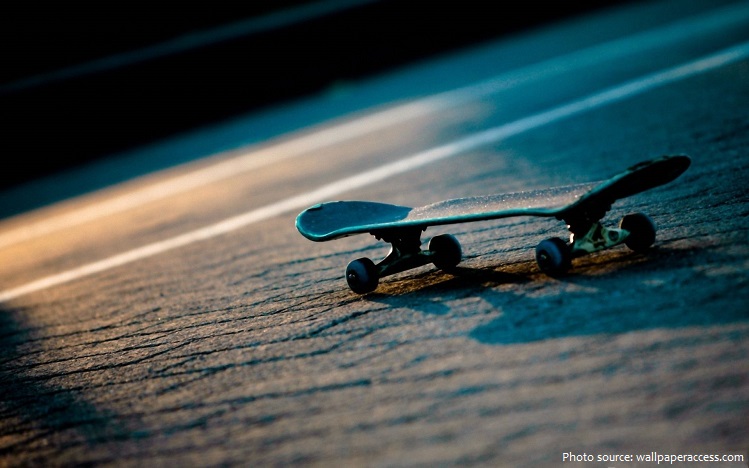
A skateboard is a board with wheels on the bottom that you ride standing up.
They are usually made of a specially designed 7-8 ply maple plywood deck and polyurethane wheels attached to the underside by a pair of skateboarding trucks.
The skateboard’s origin began in California and Hawaii, two places where surfing is a common sport. The 1930s was the beginning of skateboarding, and surfing was at its source.
The first skateboards started with wooden boxes, or boards, with roller skate wheels attached to the bottom. Crate scooters preceded skateboards, having a wooden crate attached to the nose (front of the board), which formed rudimentary handlebars. The boxes turned into planks, similar to the skateboard decks of today.
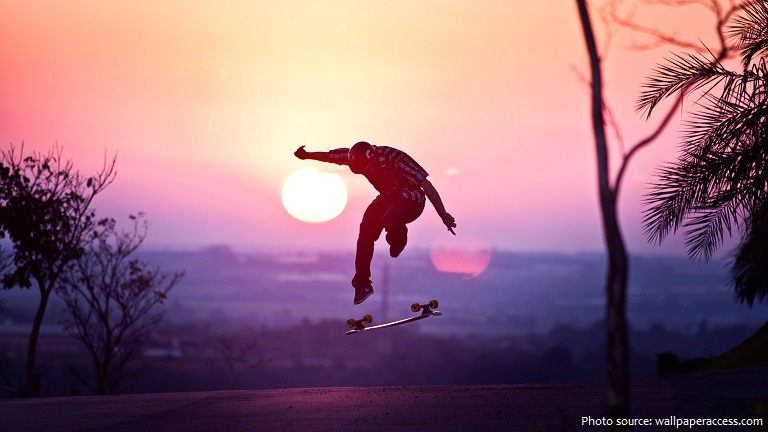
The launch ramp of 1950’s California lit the torch of skateboarding to be handed off to each new generation over the coming eras. In these decades, skateboarding transcended through ups and downs of economic prosperity and mainstream popularity as different faces and figures shined in the spotlight or dominated the back alleys of urban performance.
In 1959, Roller Derby released the first official skateboard with some new technical developments. Thereby, the handling characteristics have been improved. For this reason, skateboarders were able to develop new tricks and maneuvers.
In the early 1960s, skateboard manufacturers such as Makaha and Hobie attempted to capitalize on the rising popularity of surfing by promoting skateboarding, then known as “sidewalk surfing,” as an alternative diversion when no rideable waves were available. In 1963 Makaha formed the first professional skateboard team, and that same year the first skateboard competition was held in Hermosa, California. It included events in freestyle and downhill slalom skateboarding. The initial popularity of skateboarding waned over the next couple of years because of the limitations of the skateboard’s maneuverability and because of warnings from safety professionals that the activity was dangerous.
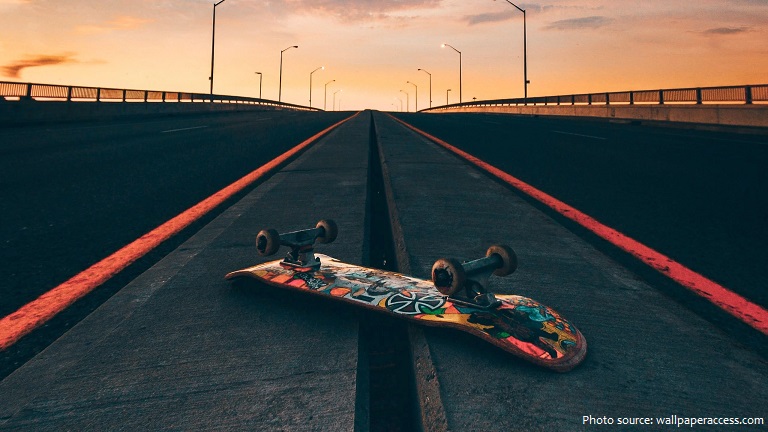
Skateboards were revived in the mid-1970s after the development of the faster and more-maneuverable polyurethane wheel and the introduction of the kicktail, the raised back end of the board that makes kickturns possible. The craze spread worldwide, and skateboard magazines helped promote both the sport and young innovative riders such as Tony Alva and Stacey Peralta. The first skate park was built in Florida in 1976, and many others began to appear throughout North and South America, Europe, and Asia, all providing a variety of slopes and banked surfaces for sudden turns and stunts.
Skateboarding eventually traveled overseas to Germany in the mid-1970s by way of American soldiers. By 1976, Munich became the first skateboarding hub in Germany. Also in Germany, the first skate park was built in Munich Neuperlach, the first German skateboard magazines were published, and the first German skateboarding championships were held in Munich in 1978.
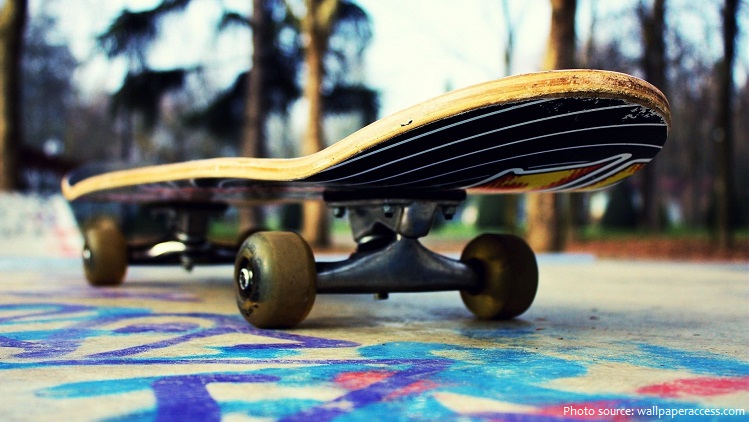
In the 1980s skateboarders built their own ramps and half-pipes and began skating the urban environments, creating what became known as street style. Increased board size and improved truck constructions helped the new style thrive. It was during this time that a distinctive youth subculture began to develop around the sport. Punk rock and baggy clothes became closely associated with young skaters.
Skateboarding during the 1990s became dominated by street skateboarding. Also, thanks to TV and other digital platforms, skateboarding maintained its public presence. From the mid-1990s, modern skateboarding became more concrete, and major events like the X-Games were held and televised. With the help of skateboarding magazines, events, videos, and, of course, the internet, the sport became worldwide.
In the early 2000s, skateboarding was officially considered a professional sport, and skaters became massive celebrities. Eventually, shows like Rob and Big, which starred pro skateboarder Rob Dyrdek, were released and became a success. Brands like DC Shoes, Etnies, Supra, Hurley, and Quicksilver that once were staples in the skating community eventually failed to gear towards current skating trends.
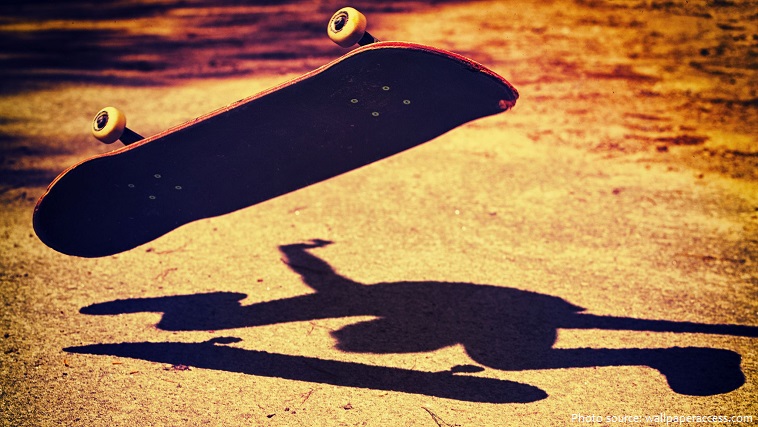
In 2010, Street League Skateboarding was founded, and it grew the popularity of street skating.
Electric skateboards became popular during the 2010s, as did self-balancing unicycles in a board format.
The sport of skateboarding made its Olympics debut at the 2020 Summer Olympics in Tokyo, with both men’s and women’s events. Competitions took place during July and August 2021 in two disciplines: street and park.
There are over 20 million skateboarders worldwide, and that number continues to grow.

Though skateboards emerged in the 1920s, skateboarding tricks like the ones done today did not appear until decades later. In the 1970s and earlier, the most common tricks were “2D” freestyle types such as manuals and pivots. Only later in the 1980s and early 1990s were common modern-day tricks like the ollie and heel-flip invented by Alan Gelfand and Rodney Mullen, setting the stage for other aerial tricks.
In 2019, artist Adrian Wilson created “the World’s Most Expensive Skateboard” – the SUPREME Mundi, a cross between an artist palette and a skateboard as a commentary on the record bids at auction of the Supreme decks and the restored Salvatore Mundi which was sold by a New York art gallery for $20,000
The largest skateboard measured 11.14 m (36 ft 7 in) long, 2.63 m (8 ft 8 in) wide and 1.10 m (3 ft 7.5 in) high.